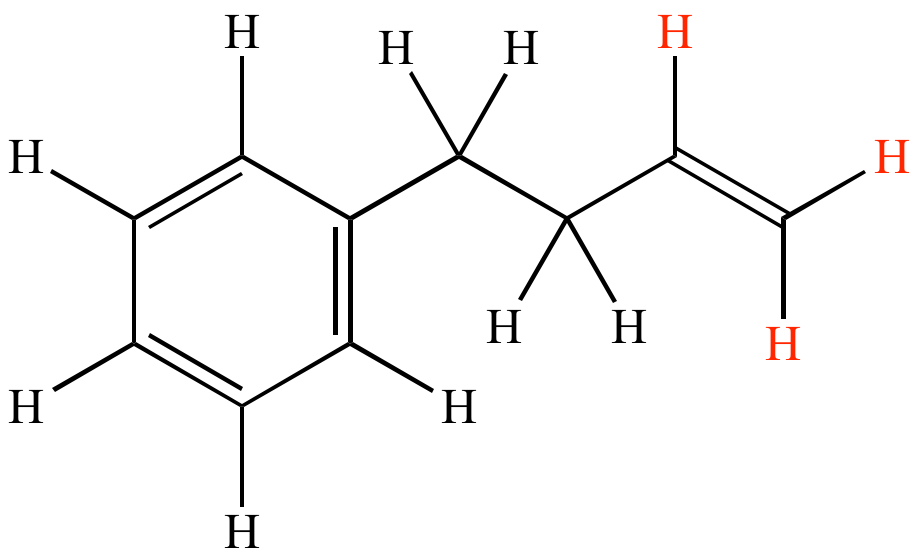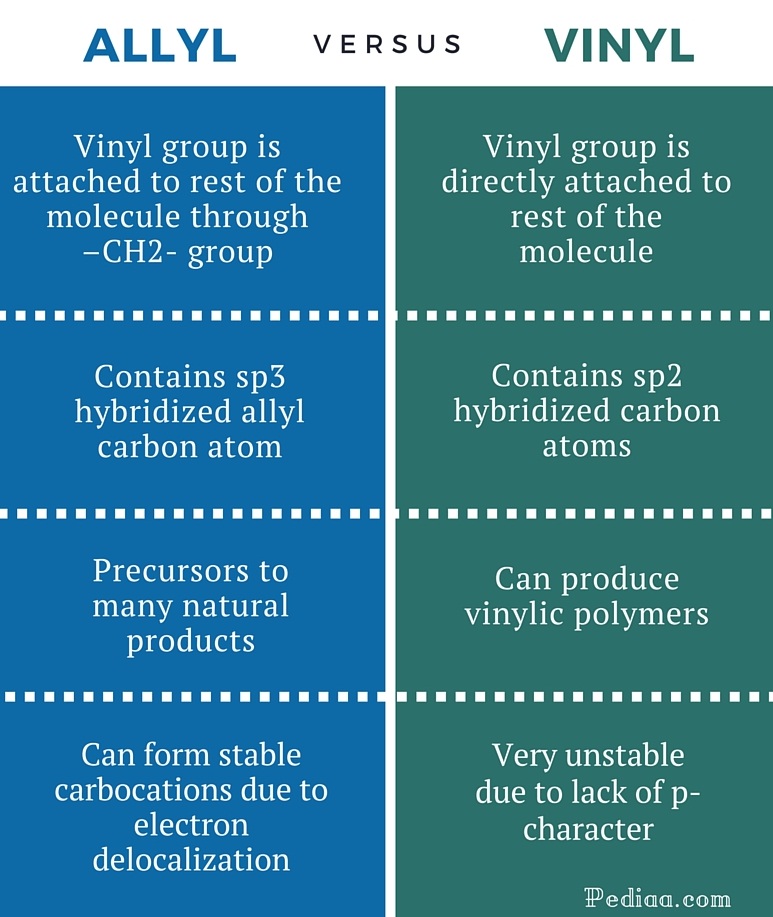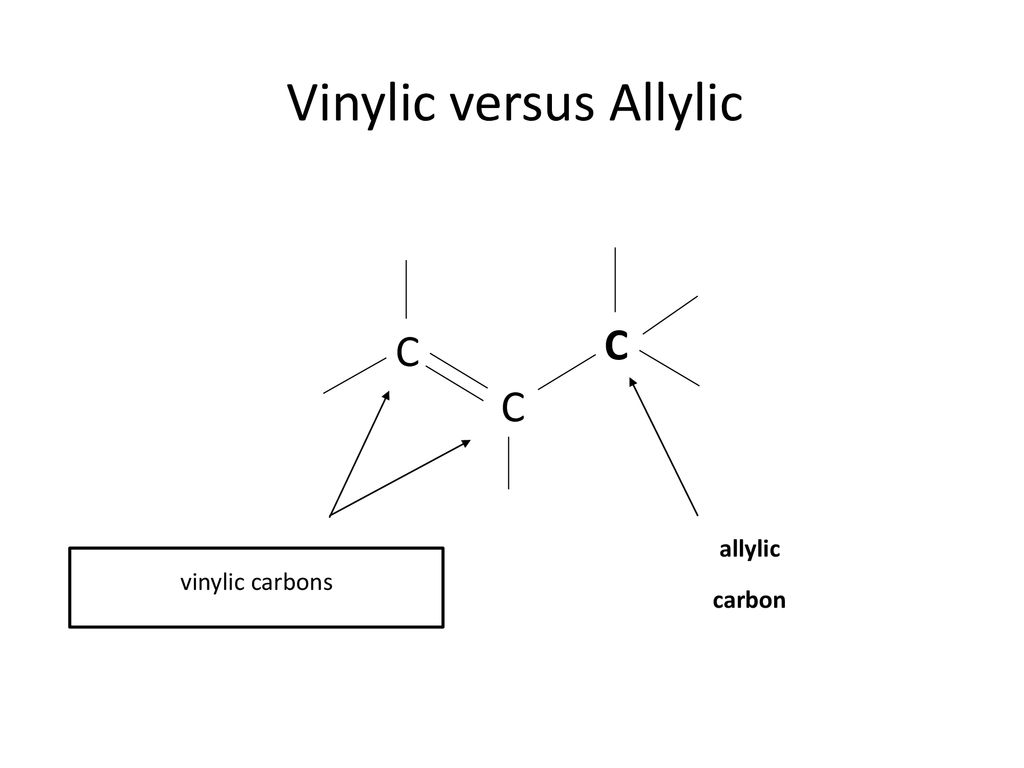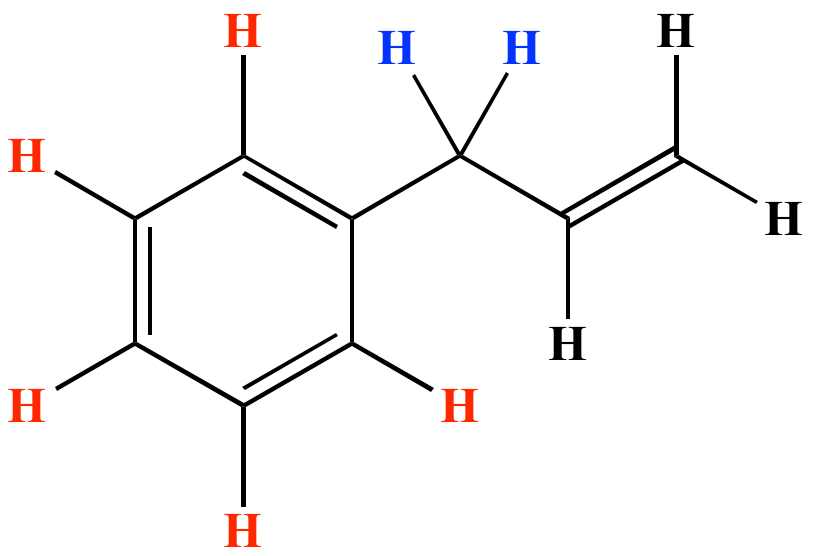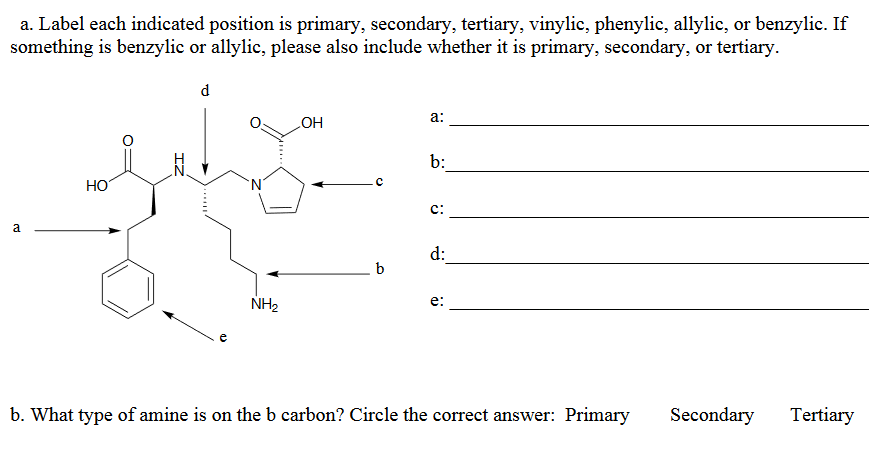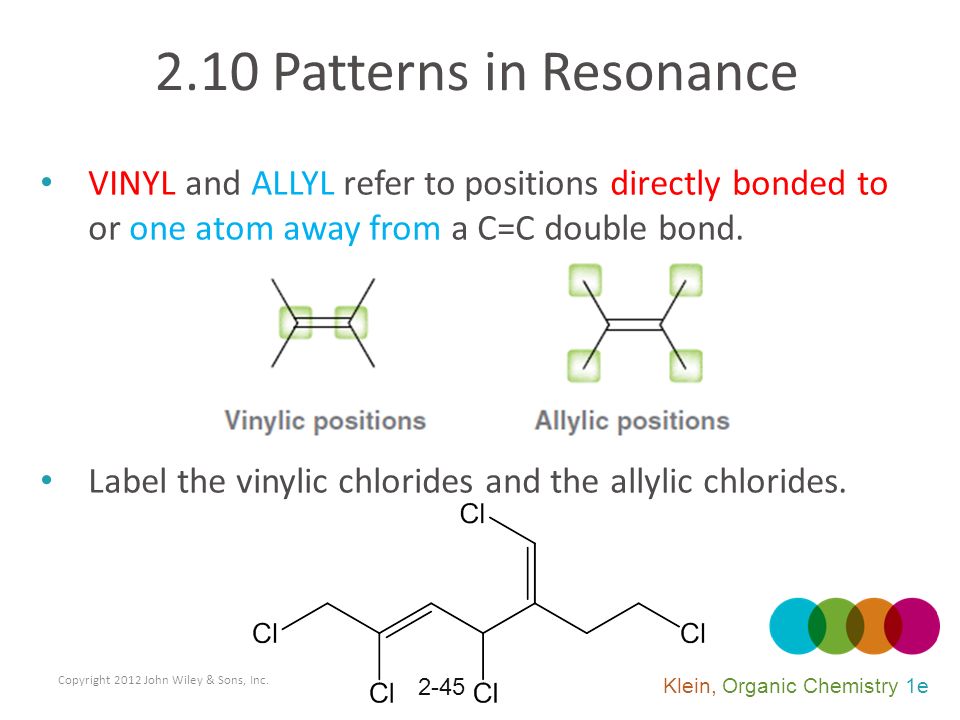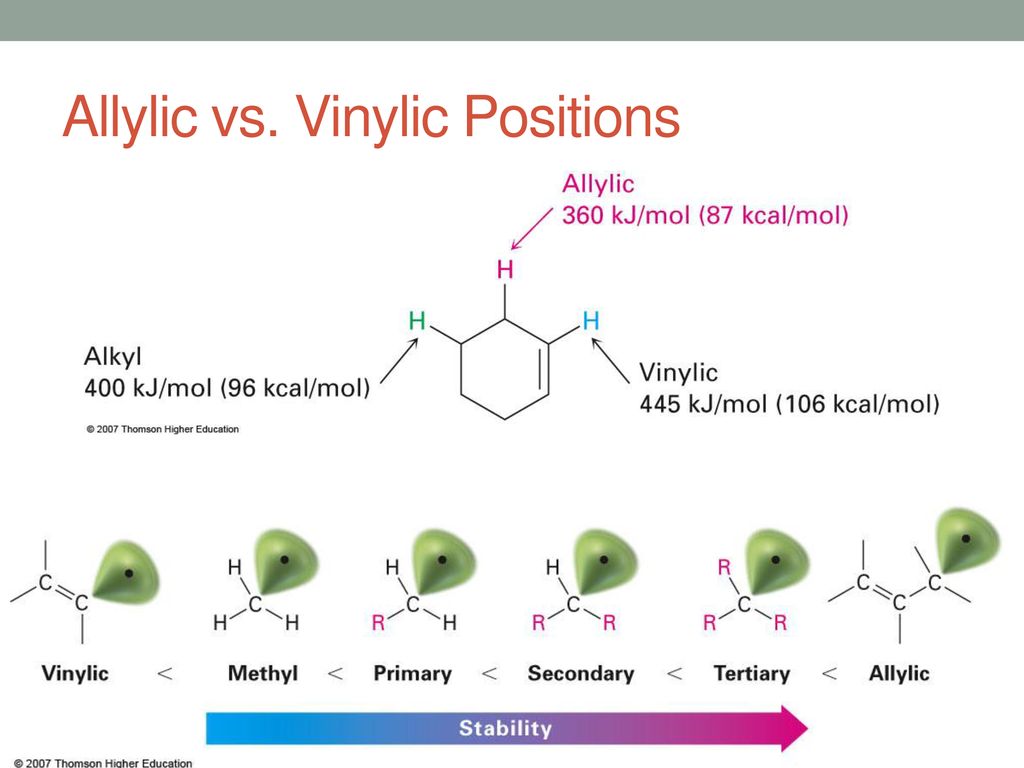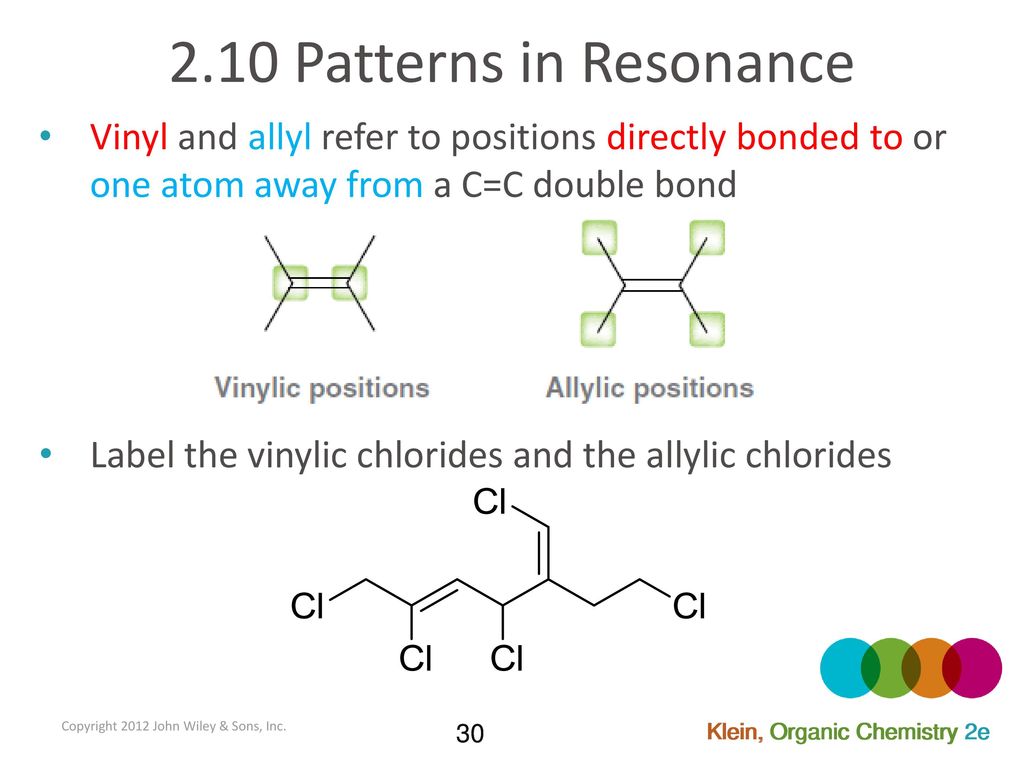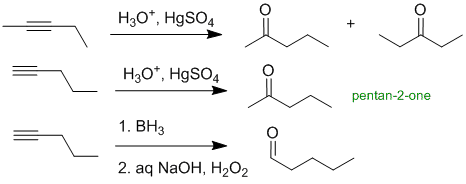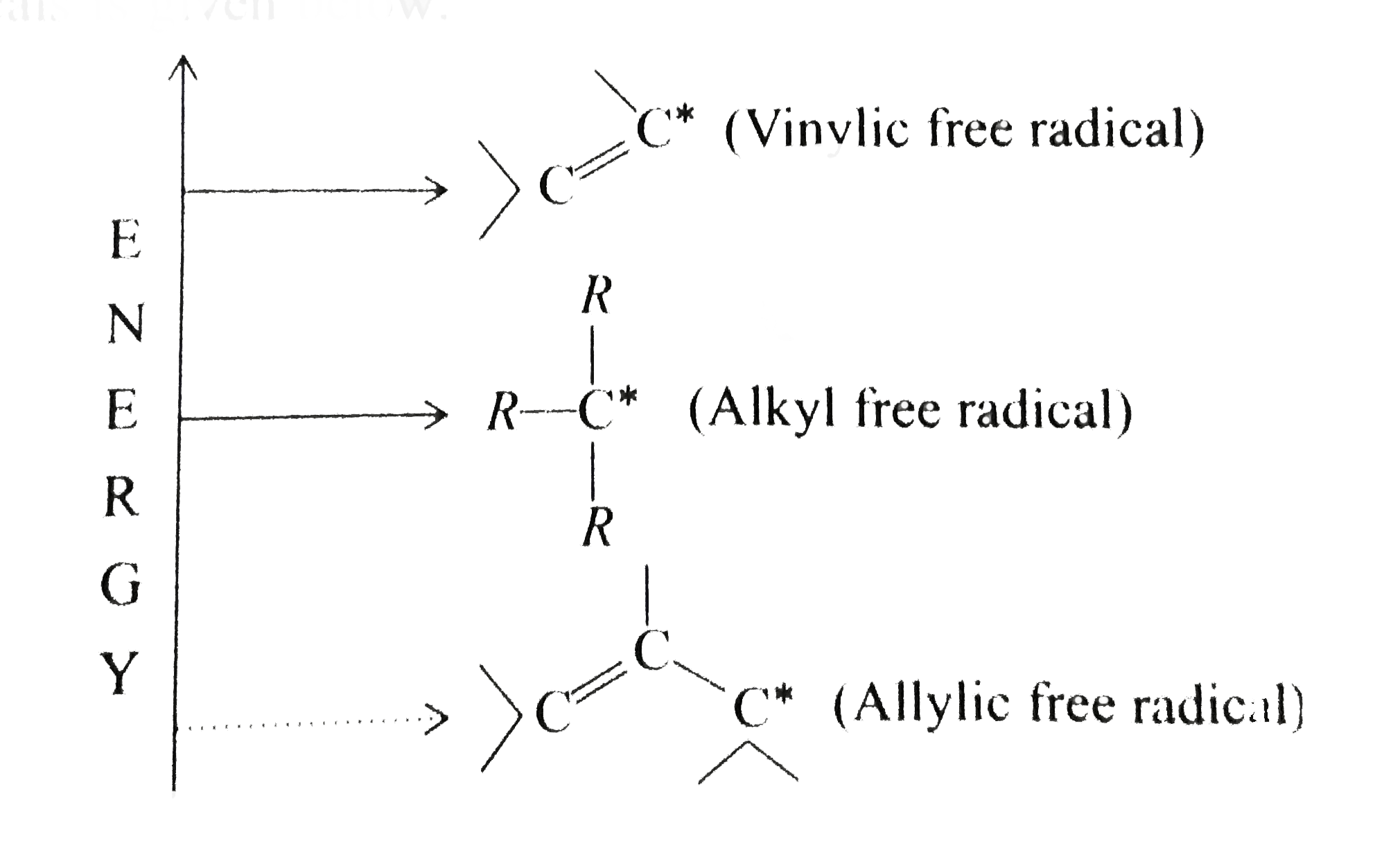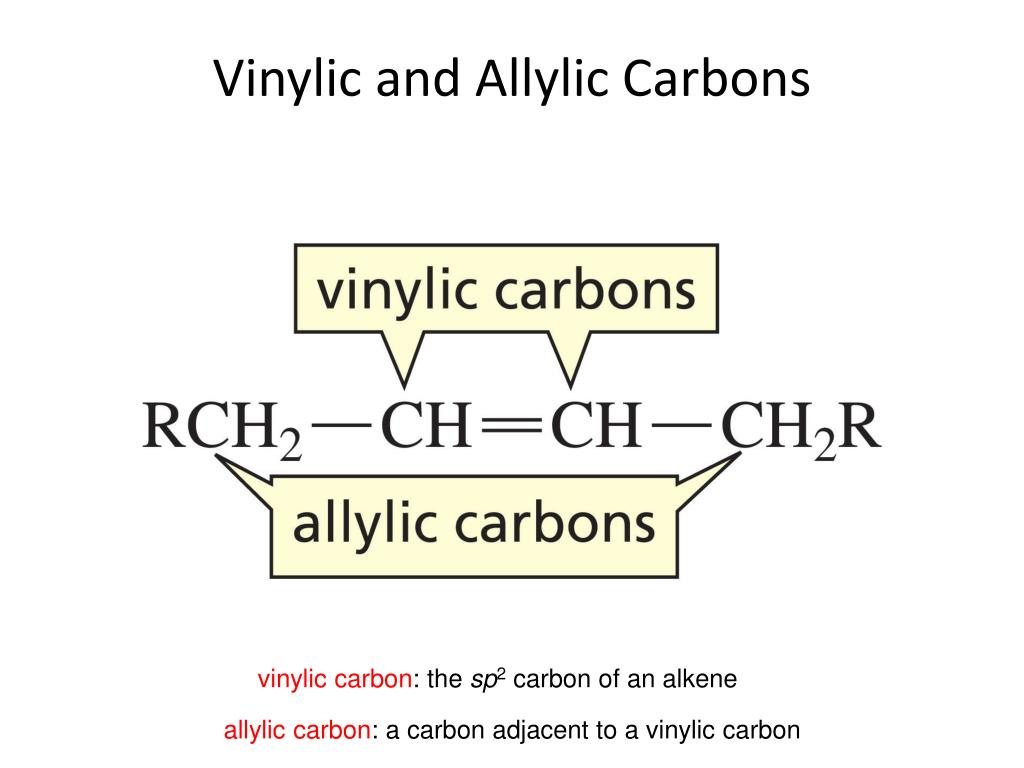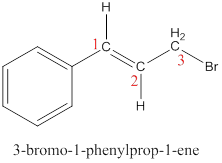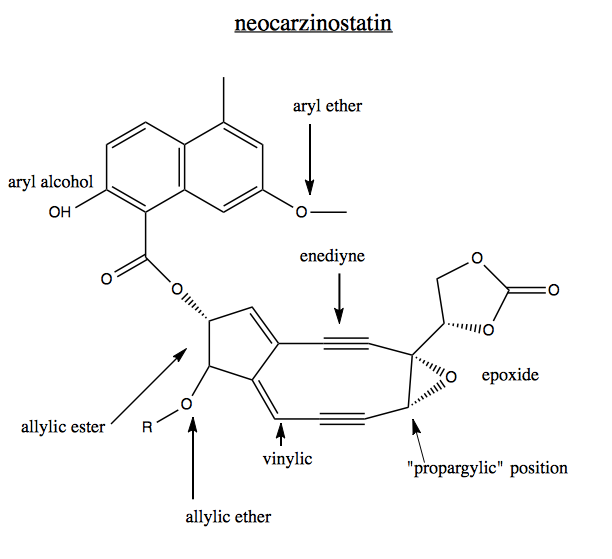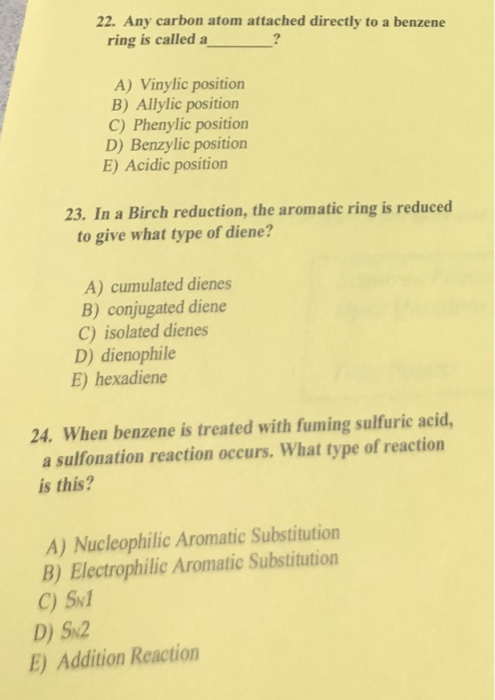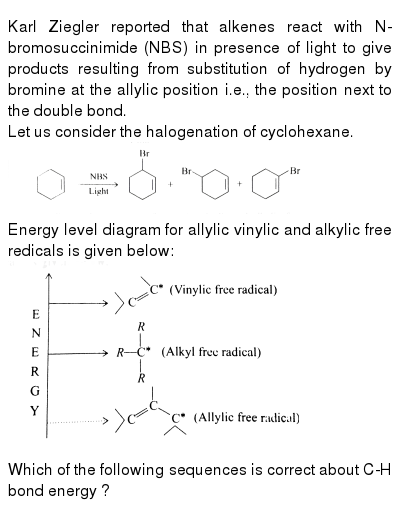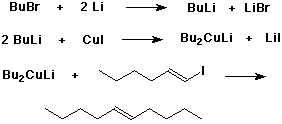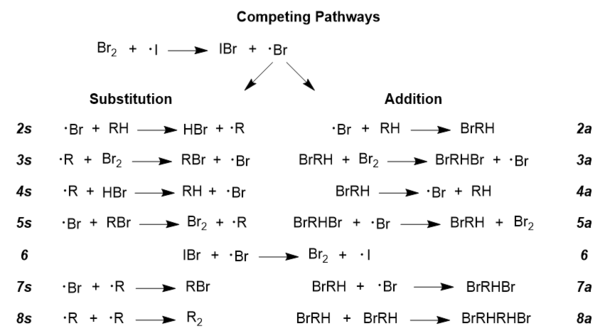Allylic Vs Vinylic Position
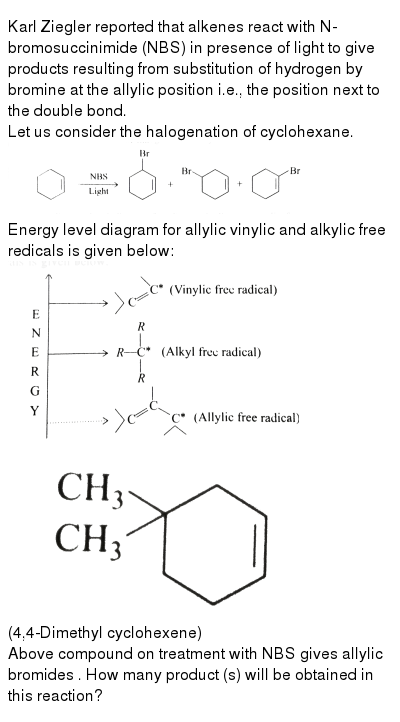
Allyl form a stable carbocation because of the electron delocalization whereas vinylic carbocations are unstable as they lack p character.
Allylic vs vinylic position. This molecule has four vinyl ic positions each marked with. It would be kept mentioned that allyl is the latin word that is used for the garlic allium sativum. It consists of a methylene bridge ch 2 attached to a vinyl group ch ch 2. Allyl have two sp 2 hybridized carbon atoms and one sp 3 hybridized carbon atom.
Key difference allylic vs vinylic carbons functional groups are very important in understanding the different physical and chemical properties of organic molecules the terms allylic and vinyl carbons indicate whether the carbon atom is bonded directly or indirectly to a double bond in a molecule. Identify the number of allylic and vinylic hydrogens in the pictured molecules. Unlike vinyl group. On or bonded to the carbon of an alkene.
The allylic carbon is bonded to a carbon atom which is doubly bonded to another carbon atom. The name is derived from the latin word for garlic allium sativum in 1844 theodor wertheim isolated an allyl derivative from garlic oil and named it schwefelallyl. Allyl indicates a functional group with structural formula h 2 c ch ch 2 r where r is the rest of the molecule it consists of methylene bridge ch 2 in between the vinyl group ch ch 2 and the rest of the molecule therefore allyl group contains sp 2 hybridized vinyl carbon atoms and sp 3 hybridized allyl carbon atom. The allylic position is also like a vinylic position.
An allyl group is a substituent with the structural formula h 2 c ch ch 2 r where r is the rest of the molecule. The key difference between these two structural components is the number of carbon and hydrogen atoms. Key difference allyl vs vinyl both allyl and vinyl groups have slightly similar structures with a small variation. Lewis structure of vinyl chloride a vinyl ic halide.
The general formula for allyl is r ch 2 ch ch 2 in which the asterisk carbon atom is an allylic carbon atom. Allyl groups have three carbon atoms and five hydrogen atoms.



